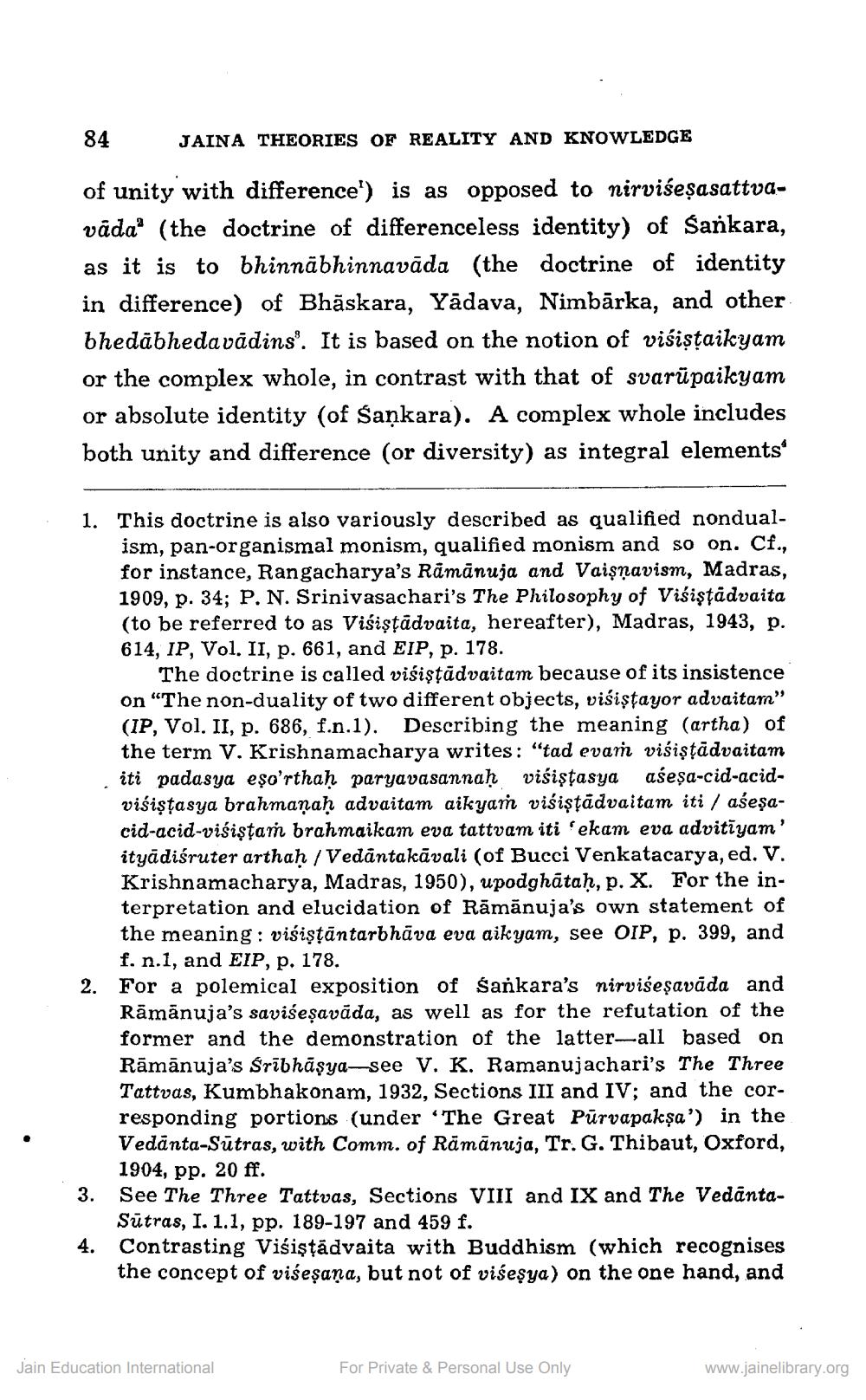________________
84 JAINA THEORIES OF REALITY AND KNOWLEDGE of unity with difference') is as opposed to nirviseşasattvavada" (the doctrine of differenceless identity) of Sankara, as it is to bhinnābhinnavāda (the doctrine of identity in difference) of Bhāskara, Yādava, Nimbārka, and other bhedābhedavādins”. It is based on the notion of visistaikyam or the complex whole, in contrast with that of svarūpaikyam or absolute identity (of Sankara). A complex whole includes both unity and difference (or diversity) as integral elements
1. This doctrine is also variously described as qualified nondual
ism, pan-organismal monism, qualified monism and so on. Cf., for instance, Rangacharya's Ramānuja and Vaişşavism, Madras, 1909, p. 34; P. N. Srinivasachari's The Philosophy of Viśiştādvaita (to be referred to as Visiştādvaita, hereafter), Madras, 1943, p. 614, IP, Vol. II, p. 661, and EIP, p. 178.
The doctrine is called višiştādvaitam because of its insistence
"The non-duality of two different objects, visistayor advaitam" (IP, Vol. II, p. 686, f.n.1). Describing the meaning (artha) of the term V. Krishnamacharya writes: "tad evam višiştādvaitam iti padasya eşo'rthah paryavasannah viśistasya aśeşa-cid-acidviśiştasya brahmaṇaḥ advaitam aikyam viśiştādvaitam iti / aśesacid-acid-višiştam brahmaikam eva tattvam iti 'ekam eva advitiyam' ityādiśruter arthah / Vedāntakāvali (of Bucci Venkatacarya, ed. V. Krishnamacharya, Madras, 1950), upodghātah, p. X. For the interpretation and elucidation of Rāmānuja's own statement of the meaning: višistāntarbhāva eva aikyam, see OIP, p. 399, and
f. n.1, and EIP, p. 178. 2. For a polemical exposition of Śankara's nirviseşavāda and
Rāmānuja's saviseşavāda, as well as for the refutation of the former and the demonstration of the latter-all based on Rāmānuja's Śrābhāsya-see V. K. Ramanujachari's The Three Tattvas, Kumbhakonam, 1932, Sections III and IV; and the corresponding portions (under The Great Pūrvapakşa') in the Vedānta-Sūtras, with Comm. of Rāmānuja, Tr. G. Thibaut, Oxford, 1904, pp. 20 ff. See The Three Tattvas, Sections VIII and IX and The VedāntaSūtras, I. 1.1, pp. 189-197 and 459 f. Contrasting Visiştādvaita with Buddhism (which recognises the concept of visesana, but not of visesya) on the one hand, and
Jain Education International
For Private & Personal Use Only
www.jainelibrary.org




